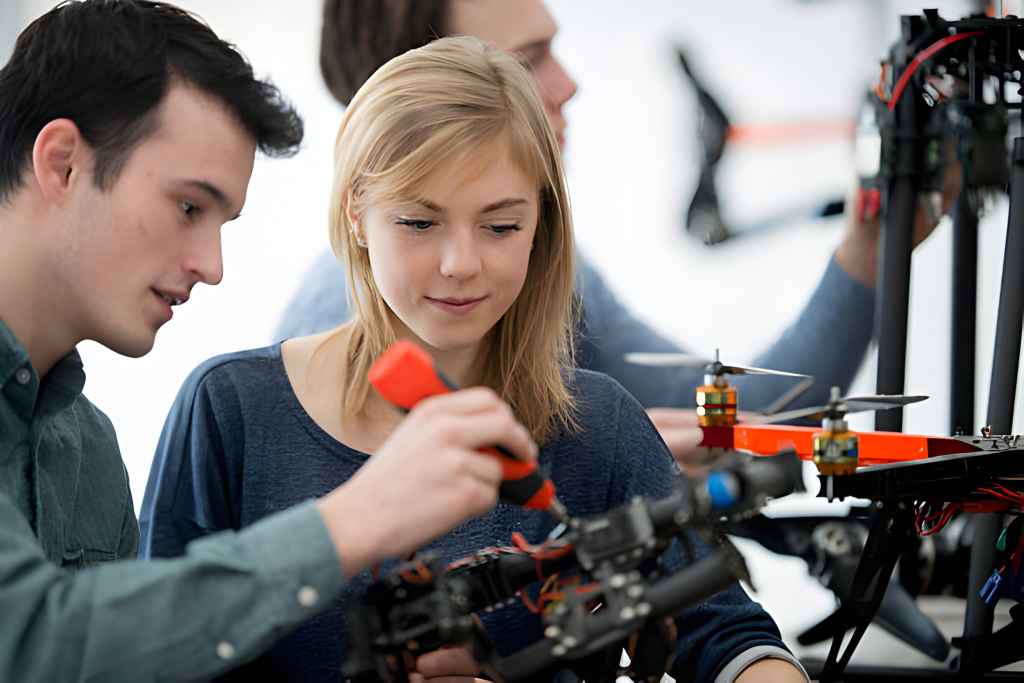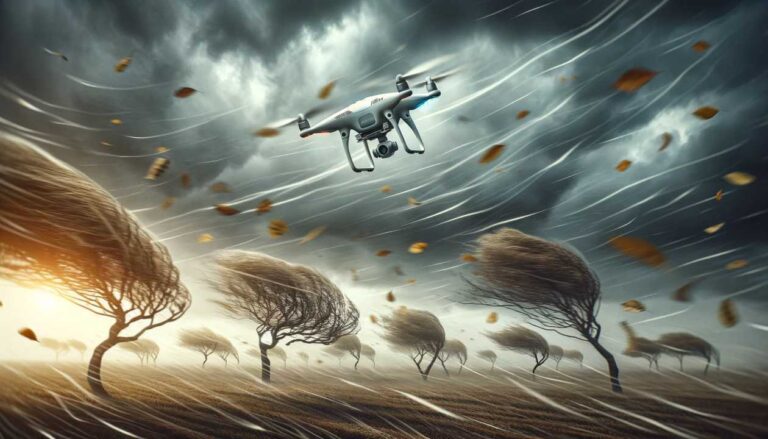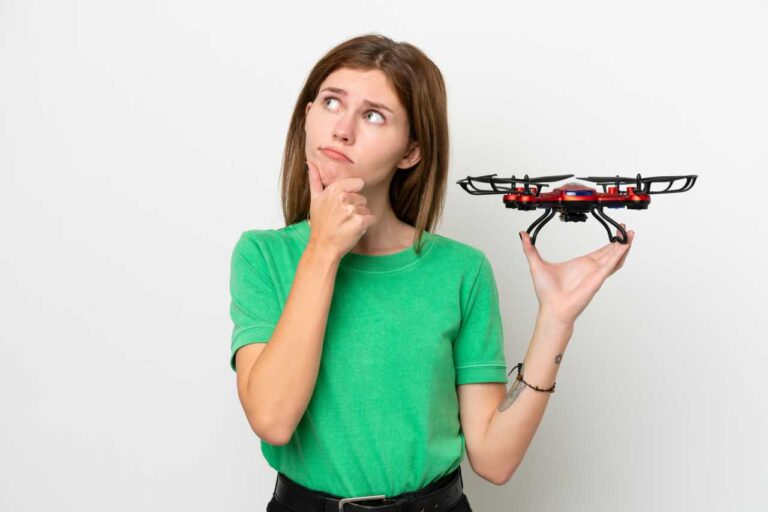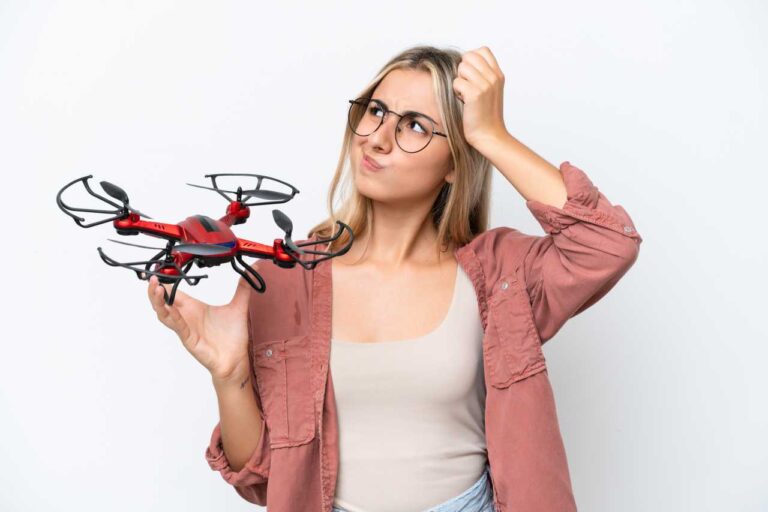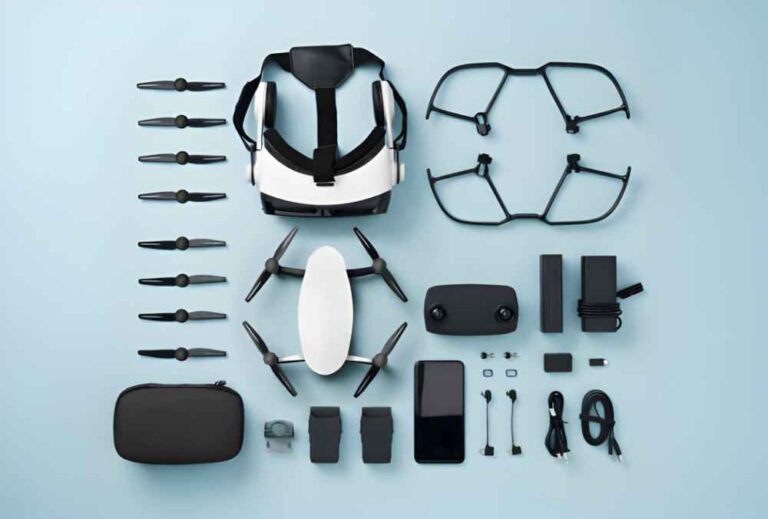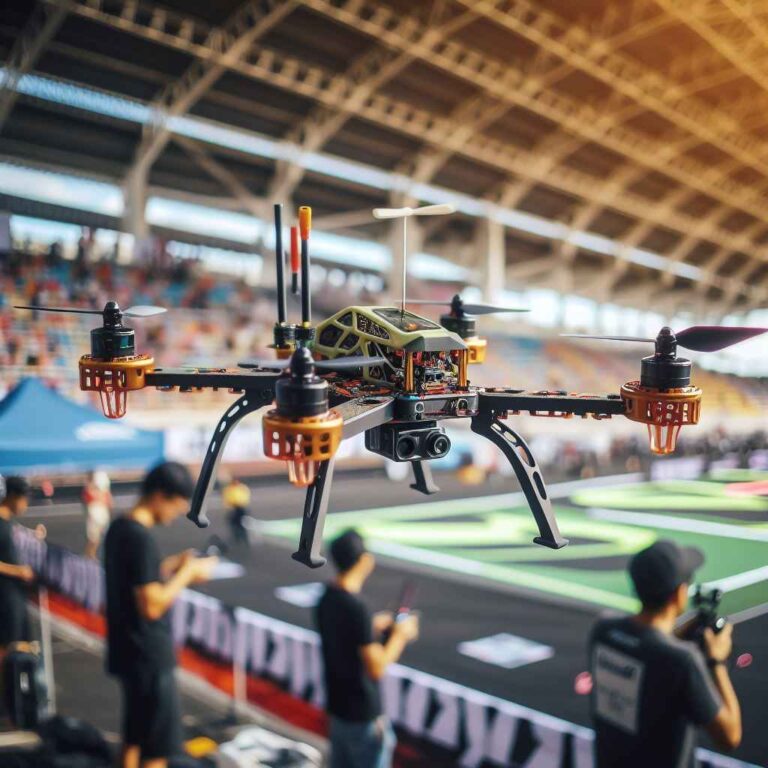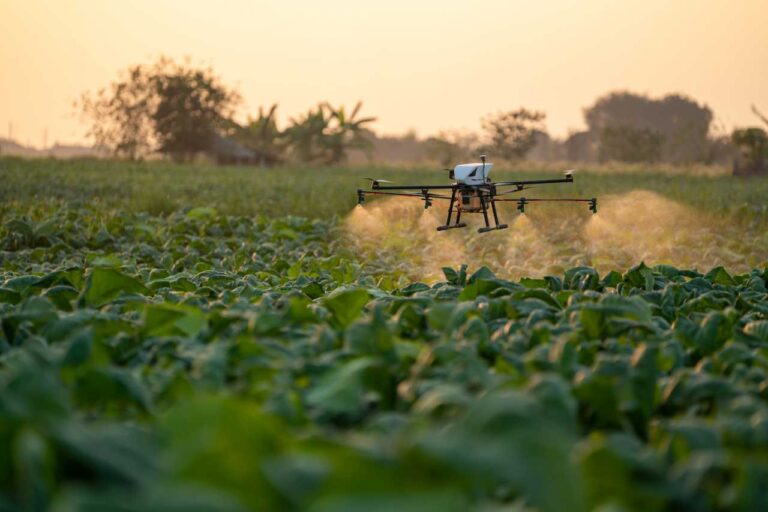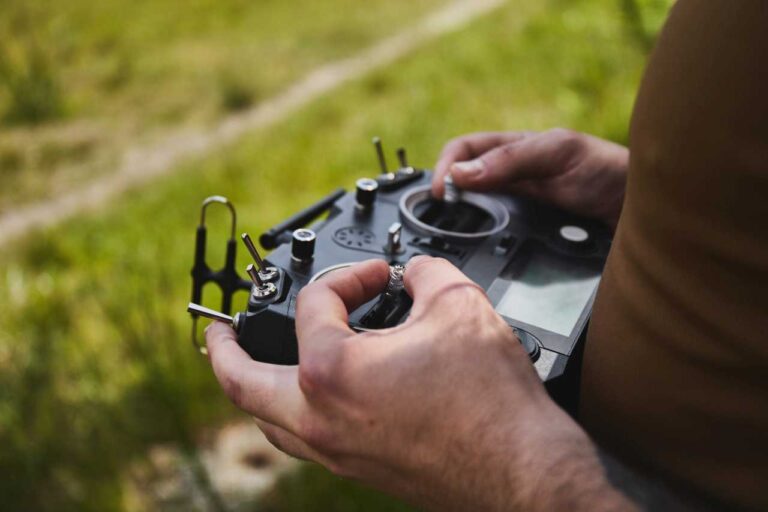Drones have become a common sight in our skies. They’re in backyards, parks, and even in military fields. Drone technology has grown rapidly in recent years. Today, a small drone can capture breathtaking aerial photography. A military drone can scout enemy locations. Commercial drones help monitor large agricultural lands. The uses seem endless.
These unmanned aerial vehicles (UAVs) have captured our imagination. They’ve also opened doors to many possibilities. From a simple quadcopter flown for fun, to advanced military drones used in defense, drones have a wide range. They come in different shapes and sizes, each serving a unique purpose.
This article aims to unravel how drones work. We’ll look into their power sources, control systems, and the technology that keeps them airborne. We’ll also explore various types of drones and their applications. From flight controllers to obstacle avoidance systems, we’ll delve into the core of drone operations.
How Drones Work?
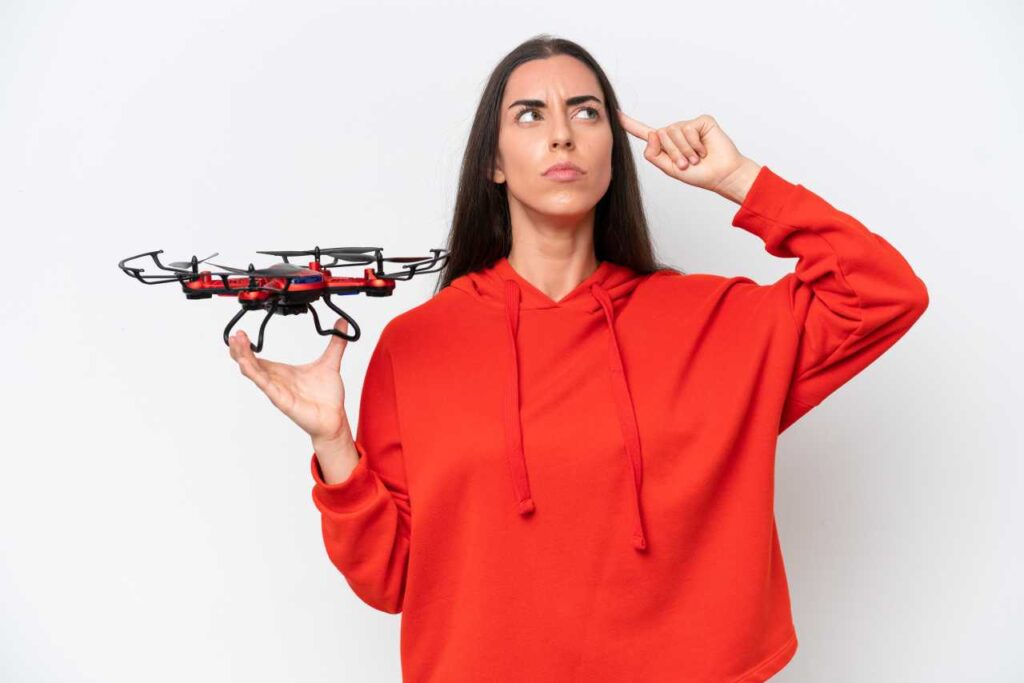
Drones, also known as unmanned aerial vehicles (UAVs), are marvels of modern drone technology. At their core, drones are flying robots which can be remotely controlled or fly autonomously through software-controlled flight plans. Their operations hinge on various components working in harmony. Let’s break down the key aspects that contribute to a drone’s operation.
What Powers a Drone?
The heart of any drone is its power source. Most drones rely on battery power. Electric motors propel the propellers creating the necessary lift for flight. The capacity of the battery defines the flight time a drone can achieve. More powerful batteries can sustain longer flights.
What Controls a Drone?
Drones are operated through remote controllers or smartphone apps. The remote control communicates with the flight controller on the drone, enabling maneuvering. Control systems are evolving with drone technology, making drones easier to operate.
How Do Drones Achieve Lift and Direction?
The propellers of a drone spin at different speeds to achieve lift and direction. The rotors create upward force when the propellers rotate. Changing the speed of individual propellers allows the drone to move in different directions.
What Types of Sensors are Involved?
Drones are equipped with various sensors to navigate and stabilize their flight. Obstacle avoidance sensors help drones navigate around barriers. Accelerometers and gyroscopes measure speed and maintain stability, respectively. Ultrasonic sensors can measure the distance between the drone and the ground, aiding in safe landings.
These fundamental aspects work together, making the complex operation of drones seem effortless.
Different Types of Drones
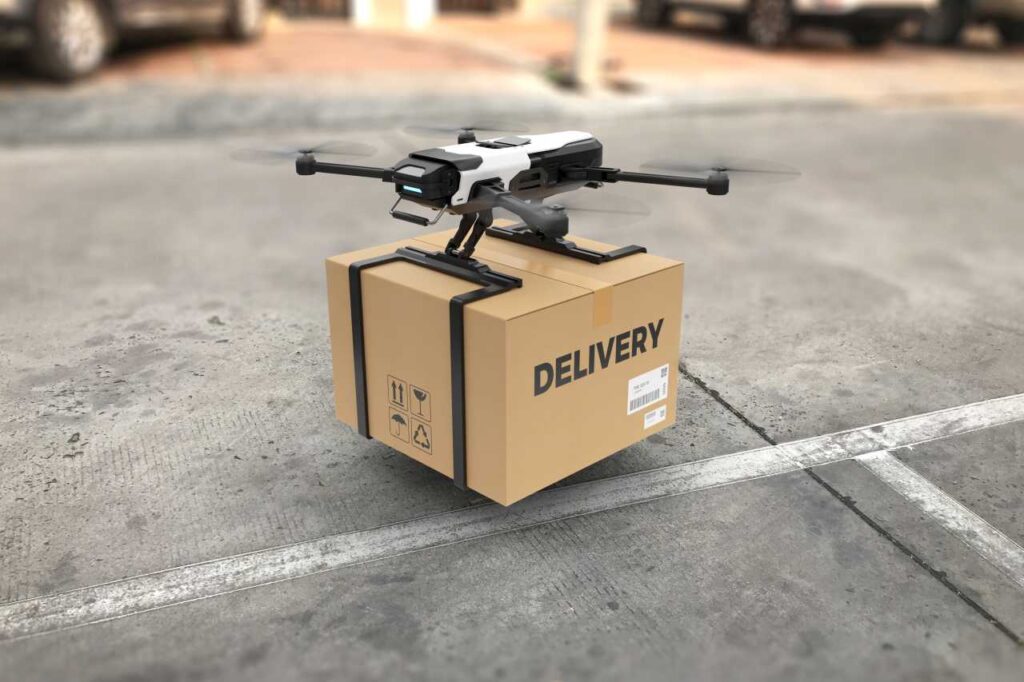
The world of drones is diverse, with each type designed for specific tasks. Understanding the main types of drones can help individuals and professionals choose the right drone for their needs.
What are the Main Types of Drones?
Drones come in various designs, each serving unique purposes. The quadcopter is common for recreational use and aerial photography. Its four propellers provide stability and ease of control. Fixed-wing drones resemble airplanes and are known for longer flight times and higher speeds. They’re suitable for mapping and surveillance. Single-rotor helicopter drones and fixed-wing hybrid VTOL (Vertical Take-Off and Landing) drones blend characteristics of both, offering versatility in flight.
How are Military Drones Different from Commercial Drones?
Military drones and commercial drones have different roles. Military drones are often bigger. They can fly longer. They have advanced sensor and target systems for scouting or fighting. In contrast, commercial drones are usually smaller. They are made for aerial photos, checking things, mapping, and alike tasks. Autonomous drones in the military are changing. They display the mix of artificial intelligence with UAV technology.
Drone Applications
Drones have carved a niche in various fields. Their ability to reach places humans can’t, has made them a valuable tool. Let’s explore some areas where drones are making a significant impact.
How are Drones Utilized in Aerial Photography and HD Video Capture?
Drones have revolutionized aerial photography and HD video capture. With a drone, capturing bird’s-eye-view images or videos is a breeze. They provide new angles for creative photography and are invaluable for capturing large events from above.
What Roles Do Drones Play in Law Enforcement?
Law enforcement agencies employ drones for multiple purposes. They are used for surveillance, crowd monitoring, and aerial mapping of crime scenes. Drones provide a bird’s eye view, aiding in tactical planning and suspect tracking.
How Are Drones Shaping the Future of Delivery Services?
Companies like Amazon are testing drones for delivery services. Drones can zip through the sky, delivering packages swiftly. However, there are challenges like airspace regulations set by the FAA, and obstacle avoidance that need to be addressed.
Drones are not just flying gadgets; they are tools extending human capabilities. The applications of drones are vast and continue to grow with advancements in drone technology.
Drone Accessories and Add-Ons
Drones, by themselves, are robust tools capable of numerous tasks. Yet, their functionality can be greatly extended with the right set of accessories and add-ons. These additional components can make drone flying more enjoyable, safe, and productive.
What Are Some Essential Drone Accessories?
A drone can be much more than just a flying gadget with the right accessories. Here are some essential drone accessories to consider:
- Spare batteries: More batteries mean extended flight time.
- Carrying case or backpack: For safe and convenient transportation of your drone.
- High capacity memory card: To store more aerial photography and video footage.
- Neutral density filters: Help in managing exposure in bright sunlight while capturing videos or photos.
- Spare propellers: Handy in case of damages during flight.
- Landing gear extensions: Provide a safer landing and take-off.
- Propeller guards: Essential for the safety of your drone, especially for beginners.
- Camera lens filters: Enhance the quality of your images and videos.
- Sunshade hood: Protects your screen from glare during daylight flights.
- Remote controller lanyard: Ensures the safety and convenience of carrying the remote controller.
- Microfiber cleaning cloth: Keeps your camera lens clean for the best HD video and photo quality.
- GPS tracker: Helps in tracking your drone.
- Landing pad: Provides a clean and safe surface for takeoff and landing.
- Reflective vest: For visibility while flying your drone.
- Arm braces: Provides additional support to the drone’s structure.
These accessories can protect your drone, improve your aerial photography and videography, and make the flying experience more enjoyable.
How Do Add-Ons Enhance the Functionality of Drones?
Add-ons go a step further to augment the capabilities of drones:
- Improved precision and accuracy: Tools like Dronelink can align, georectify missions, and adjust drone position to capture better data. This is beneficial for numerous sectors including real estate, construction, agriculture, and public safety.
- Remote ID and detection: Upgrades like EnforceAir’s counter drone software can provide long-range detection, identification, and tracking of drones, crucial for security and safety.
- Third-party apps: Apps like Kittyhawk, DroneDeploy, and Pix4D expand drone functionalities with features like insurance, authorizations, pre to post-flight planning, automated missions, and data analysis.
- Software upgrades: Like the major mobile app release for DJI Enterprise drones, can introduce new features and enhance drone performance.
Add-ons and accessories boost the drone fun. They make flying better, more effective, and enjoyable. They help whether it’s snapping better pictures, crossing tough terrains, or keeping the drone safe and lasting longer.
The Future of Drones
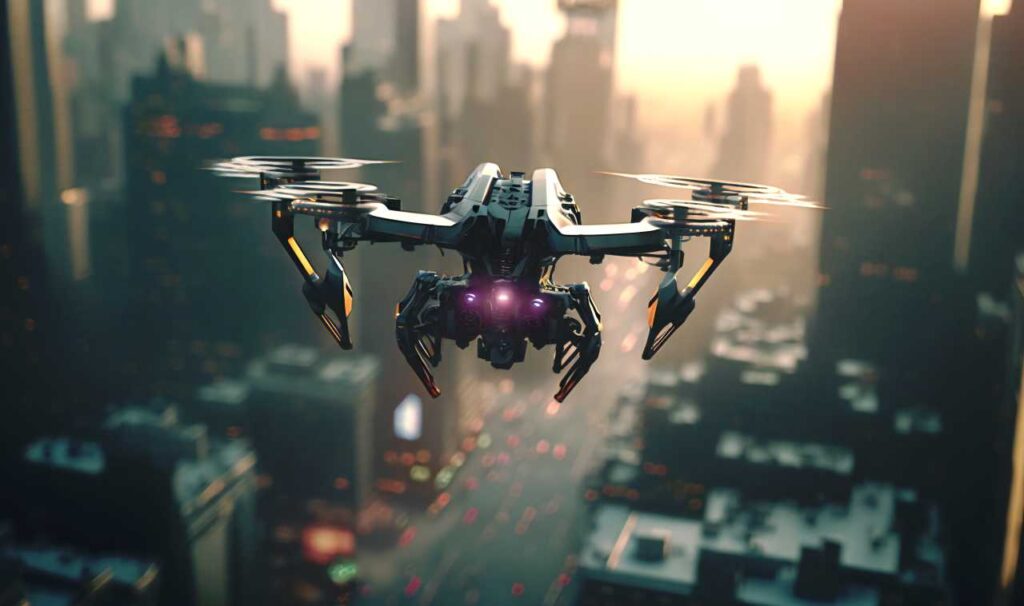
The evolution of drones is remarkable. Advanced technologies contribute to this evolution. A notable aspect is the blend of artificial intelligence (AI) and drone technology. Looking ahead, numerous innovations are set to refine drone capabilities further.
How Is Artificial Intelligence Integrating With Drone Technology?
Artificial intelligence reshapes drone capabilities. Drones are becoming smarter. They are more adept at various tasks. Here’s how AI intertwines with drone functionalities:
- Object Recognition: AI algorithms empower drones. They can recognize and track objects swiftly and accurately. This feature benefits sectors like agriculture, construction, and delivery services.
- Navigation: Drones now navigate autonomously. They avoid obstacles with the help of ultrasonic sensors. They adjust their flight path in real-time. This enhancement aids disaster response, environmental monitoring, and precision agriculture.
- Data Analysis: Drones process vast amounts of data. They perform complex calculations. They provide crucial insights for surveillance, inspection, and mapping endeavors.
- Integration with Existing Systems: AI-based drone technology melds with other systems. They integrate with air traffic control and weather monitoring systems using radio waves. This promotes safer and more efficient drone operations.
What Innovations Are On The Horizon For Drone Technology?
The sky’s the limit for drone innovations. Numerous advancements are poised to amplify drone capabilities. Here are some of these advancements:
- Improved Computer Vision and Motion Planning: Enhancements are coming in computer vision and motion planning. Drones will navigate with higher accuracy. They will evade obstacles more effectively through precise rotation mechanisms.
- Quantum Computing: This could accelerate data processing in drones. Drones will execute complex calculations swiftly. They will provide valuable insights across various applications.
- Hydrogen Power: Hydrogen power is a prospect. It could extend flight times and range by several miles. Drones will become more efficient for myriad applications.
- Turnkey Drone Networks: These networks facilitate drone collaboration. Drones will work together efficiently. They will perform intricate tasks like mapping, surveying, and inspection.
- Autonomous Passenger Drones: Drones capable of transporting people are in development. They could potentially revolutionize urban transportation as futuristic unmanned aircraft.
- Improved Safety and Security Features: Advancements are being incorporated for safety. These include obstacle avoidance systems, geofencing, and remote identification capabilities enhanced with multispectral sensors.
These advancements hint at a promising future where drones will become even more integral. They will touch various facets of our daily lives and industries. The blend of artificial intelligence and innovative technologies sets the stage for drones to soar to new heights, both literally and figuratively.
In exploring their potential, one key aspect that often comes up is how far can drones fly, which is essential in understanding their capabilities and limitations in various applications.
Conclusion
The journey of drones has been transformative. Both tech enthusiasts and major drone manufacturers have driven this evolution. Now, they are a marvel in modern aircraft systems. Equipped with obstacle detection and collision avoidance sensors, they’ve moved beyond just imagery and surveillance. They now play substantial roles for military purposes.
The tech behind drones is brilliant. It allows them to hover, move in the opposite direction, and dodge obstacles. The central flight controller plays a big part in this. It works well with onboard sensors. Together, they guide a drone’s flight pattern. They ensure safety and success in missions.
Drones are becoming a part of our daily tasks. They mark an era where our talks with machines are not just on the ground, but in the air. The potential of drones is huge. They can change industries and make lives better. They are leading us to a future. In this future, the teamwork between humans and machines reaches new heights.

